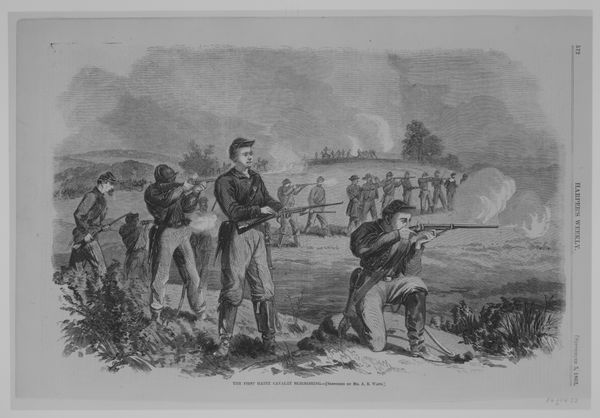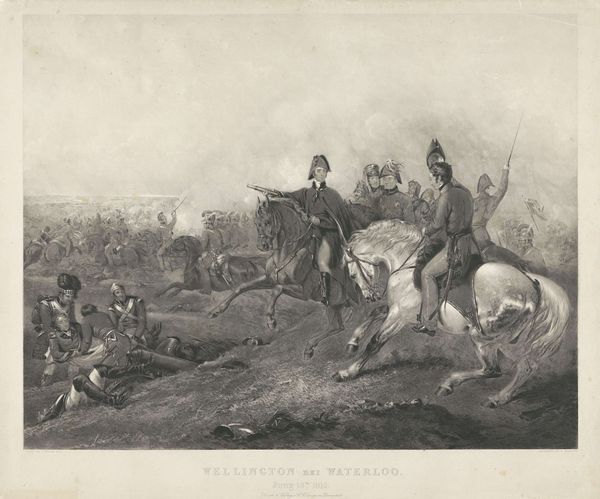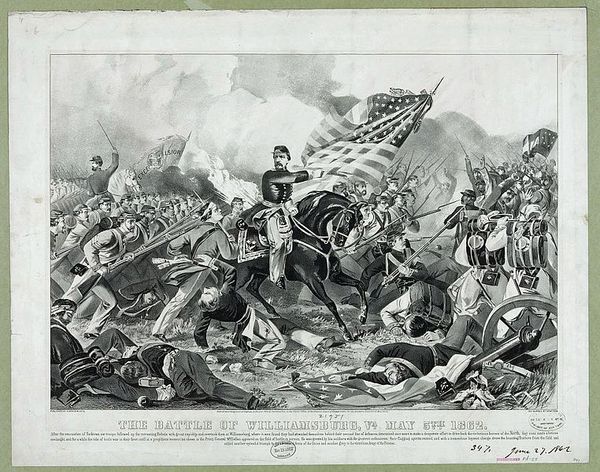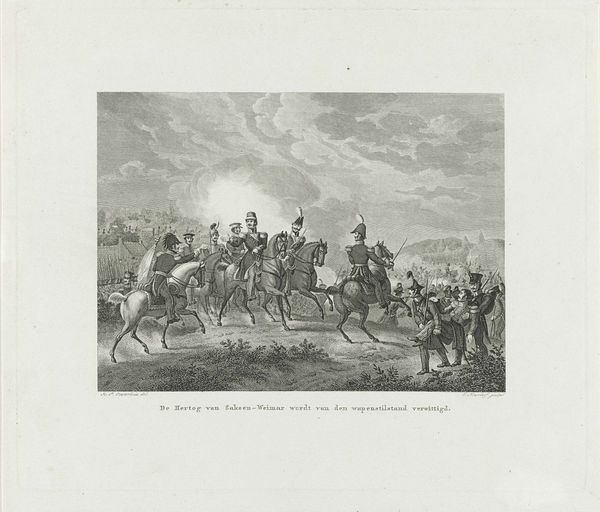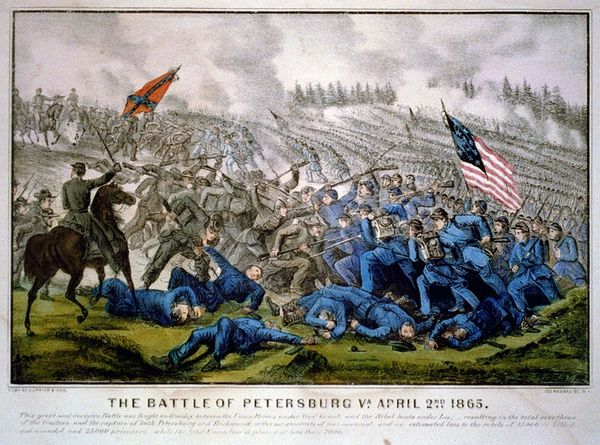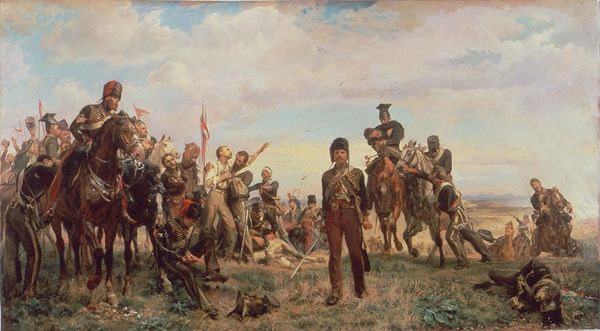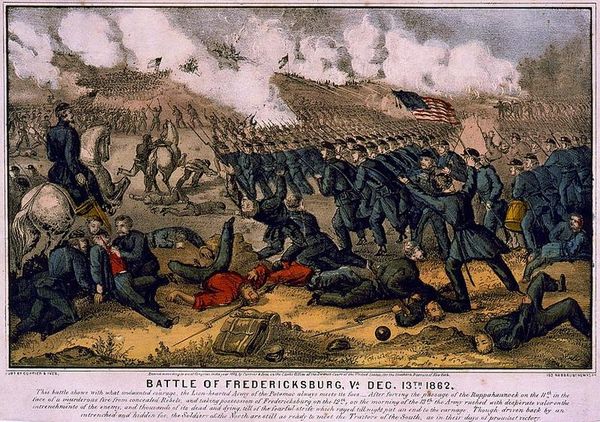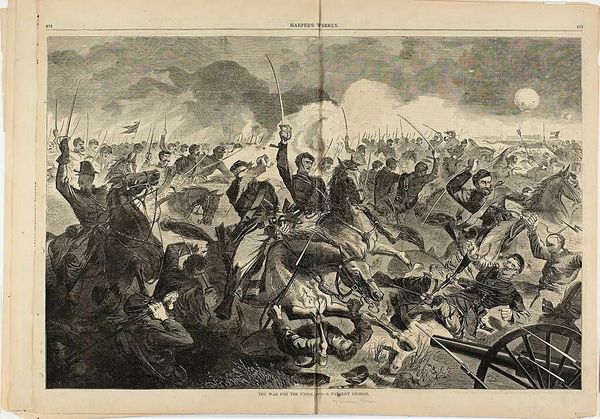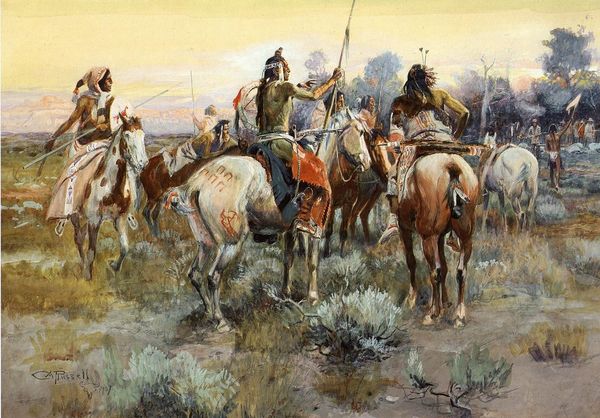
Copyright: Public domain
Editor: This is "The Discovery of the Mississippi" created in 1876 by Currier and Ives, a lithograph print. It's fascinating how a single image tries to capture such a complex historical event. I'm immediately struck by the visual dominance of the Europeans and the very passive role afforded to the Native American figure included. What’s your interpretation? Curator: This print is less a depiction of "discovery" and more a statement about cultural power, and who has the power to write, or in this case, illustrate history. Note how it monumentalizes De Soto’s expedition as heroic, a common trope in 19th-century American art meant to justify westward expansion. Who do you think this print was aimed toward? Editor: Probably white Americans. It almost feels like propaganda to validate manifest destiny? Curator: Precisely. Lithographs like these were mass-produced and distributed widely. This isn't just about recording a historical event; it's about shaping public perception and solidifying a specific narrative that conveniently ignores or diminishes the indigenous populations already present. Consider how the clergy are depicted, offering blessings as if legitimizing the colonization. Editor: That's disturbing. I hadn’t noticed the priests until you pointed them out, now I'm wondering how else it influences perception. It also almost romanticizes conquest. Curator: Precisely. The medium itself—a mass-produced print—speaks volumes about its intent to disseminate a particular viewpoint and embed that into mainstream understanding of that historical context. It is as much an image as it is a tool of ideology. What do you think we can learn from examining these historical depictions today? Editor: I think we can unpack how power is exercised in shaping public opinion, how it glosses over problematic elements, and appreciate the power of visual media. I will never view art produced at the time in quite the same way again. Curator: Exactly. Recognizing the embedded power dynamics allows us to question those narratives and critically examine the legacy of these historical moments.
Comments
No comments
Be the first to comment and join the conversation on the ultimate creative platform.


